Access Denied: Top Security for Remote Workers vs. VPNs
Explore top security solutions for remote workers, comparing access control and VPNs. Enhance your cybersecurity strategy today!
Plot Summary
Introduction to the Protagonist
The story of “Access Denied” begins with the introduction of its protagonist, Sarah Mitchell, a brilliant cybersecurity expert working for a top tech firm. Her life revolves around protecting sensitive information from cyber threats.
Sarah is portrayed as a dedicated and meticulous professional, whose skills are unmatched in the industry.
The Inciting Incident
The narrative takes a dramatic turn when Sarah receives a mysterious email that bypasses her company’s sophisticated security systems. The email contains cryptic messages and unsettling threats, hinting at a massive breach that could jeopardize national security.
This incident sets the stage for the unfolding drama, as Sarah finds herself at the center of a high-stakes cyber warfare.
The Rising Action
As Sarah delves deeper into the investigation, she discovers a shadowy organization known as “The Nexus,” which is behind the cyber threats. The tension escalates as she uncovers their plan to infiltrate government databases and manipulate critical infrastructure.
With time running out, Sarah must navigate a web of deception, betrayal, and danger to thwart their plans.
Her journey is fraught with challenges, including dealing with internal sabotage, unreliable allies, and a relentless adversary who always seems one step ahead. Each clue she uncovers leads to more questions, and the stakes continue to rise as the potential consequences of failure become increasingly dire.
Climax
The climax of “Access Denied” reaches a fever pitch as Sarah orchestrates a daring counterattack against The Nexus.
In a gripping showdown, she uses her expertise to outsmart the hackers and secure the compromised systems. The tension is palpable as she races against the clock to prevent a catastrophic data breach that could cripple the nation.
Resolution
In the aftermath of the climax, Sarah emerges victorious but not unscathed.
The resolution sees her reflecting on the personal and professional costs of her battle against The Nexus. The story concludes with Sarah deciding to use her skills to mentor a new generation of cybersecurity experts, ensuring that the lessons learned from this ordeal are not forgotten.
Character Analysis
Protagonist: Alex Carter
Alex Carter, the protagonist of “Access Denied,” is a complex character whose journey drives the narrative forward.
As a skilled cybersecurity expert, Alex is portrayed as intelligent and resourceful, often using their technical prowess to navigate challenging situations. However, beneath the professional exterior lies a deeply personal motivation that fuels their actions throughout the story.
Alex’s struggle to balance personal ethics with professional responsibilities adds depth to their character, making them relatable and engaging.
Throughout the narrative, Alex’s interactions with other characters reveal a compassionate side, particularly when faced with moral dilemmas. This duality in their character—between the logical and the emotional—creates tension and propels character development, inviting readers to explore the nuances of Alex’s personality.
Antagonist: Evelyn Drake
Evelyn Drake serves as the primary antagonist in “Access Denied,” embodying the challenges and threats that Alex must overcome.
Evelyn is depicted as a formidable opponent, with a sharp intellect and a strategic mind that rivals Alex’s own skills. Her motivations are rooted in a desire for power and control, which she seeks to achieve through manipulation and deception.
Despite her antagonistic role, Evelyn is not a one-dimensional villain.
Her backstory reveals a complex history that provides insight into her actions and choices. This depth adds layers to her character, challenging readers to consider the fine line between ambition and morality.
Evelyn’s interactions with Alex are charged with tension, creating a dynamic that is both adversarial and intriguing.
Supporting Character: Jamie Lee
Jamie Lee, a close ally of Alex, provides crucial support and companionship throughout the story. As a fellow cybersecurity expert, Jamie complements Alex’s skills with their own unique perspective and expertise.
Their camaraderie is evident in their interactions, which are marked by trust and mutual respect.
Jamie’s character also serves as a moral compass for Alex, often reminding them of the ethical implications of their actions. This role is pivotal in shaping Alex’s decisions and highlighting the importance of integrity in the face of adversity.
Jamie’s presence in the story adds a layer of emotional depth, underscoring the significance of friendship and loyalty in overcoming challenges.
Writing Style
Tone and Voice
The writing style in “Access Denied” is characterized by a formal and authoritative tone. This is essential in conveying the seriousness of the situation when access is restricted, ensuring that the message is perceived with the intended weight.
The voice is direct and unambiguous, leaving no room for misinterpretation. This clarity is crucial in maintaining the integrity of the communication, especially in contexts where security and compliance are involved.
Clarity and Precision
Clarity and precision are paramount in the writing style of “Access Denied” messages.
The language used is straightforward and devoid of unnecessary jargon, which helps in delivering the message effectively to a diverse audience. Each word is chosen carefully to eliminate ambiguity, ensuring that the recipient understands the exact nature of the denial and any potential steps they may need to take to resolve the issue.
Consistency
Consistency in writing style is vital to maintain a professional image and to avoid confusion.
In “Access Denied” scenarios, the use of consistent terminology and structure helps users quickly recognize and understand the message. This consistency extends to the use of specific phrases, formatting, and even the visual presentation of the message, contributing to a seamless user experience.
Empathy and Support
While the primary function of an “Access Denied” message is to inform, incorporating a sense of empathy can enhance the user experience.
The writing style often includes supportive language that acknowledges the user’s potential frustration and offers guidance. Phrases that suggest alternative actions or provide contact information for further assistance can help mitigate negative reactions and foster a more positive interaction.
Brevity
Brevity is a key aspect of the writing style in “Access Denied” communications.
The message is typically concise, focusing on delivering essential information without overwhelming the reader. This brevity ensures that the user can quickly grasp the situation and any necessary actions, which is particularly important in high-pressure environments where time is of the essence.
Overall Impression
Visual Aesthetics
The visual aesthetics of “Access Denied” are striking, combining a sleek, modern interface with a minimalist design that enhances user engagement.
The color palette is carefully chosen to convey a sense of urgency and mystery, which aligns perfectly with the theme of restricted access. The use of high-contrast elements ensures that important information stands out, making navigation intuitive and user-friendly.
User Experience
“Access Denied” offers a seamless user experience characterized by its intuitive navigation and responsive design.
Users find the interface easy to navigate, with clearly labeled sections and a logical flow that guides them through the content effortlessly. The interactive elements are well-implemented, providing feedback and guidance without overwhelming the user.
This balance between functionality and simplicity ensures that users remain engaged and satisfied.
Content Quality
The content quality of “Access Denied” is exceptional, providing users with comprehensive and well-researched information. The narrative is compelling, keeping users intrigued and motivated to explore further.
The text is concise yet informative, ensuring that users receive the necessary details without unnecessary fluff. Additionally, the incorporation of multimedia elements such as images and videos enriches the content, making it more engaging and accessible.
Technical Performance
From a technical standpoint, “Access Denied” performs admirably.
The website loads quickly, with minimal latency, ensuring that users do not experience frustrating delays. The platform is optimized for various devices, maintaining its functionality and aesthetic appeal across desktops, tablets, and smartphones.
Furthermore, robust security measures are in place to protect user data, reinforcing the theme of access and restriction.
Emotional Impact
The emotional impact of “Access Denied” is profound, as it effectively immerses users in its theme of restricted access and the intrigue surrounding it. The combination of visuals, content, and interactive elements evokes a sense of curiosity and urgency.
Users often report feeling engaged and motivated to uncover more about the narrative, which speaks to the effectiveness of the overall design and execution.
FAQ
Q1: Who should consider purchasing “Access Denied”?
A1: “Access Denied” is an excellent choice for individuals who frequently encounter restricted content or need to enhance their online privacy. This includes students who require access to educational resources that may be blocked by institutional firewalls, travelers who want to bypass geo-restrictions while accessing their favorite content abroad, and professionals who need secure and unrestricted internet access for work-related tasks. By providing a reliable solution to bypass digital barriers, “Access Denied” ensures that users can enjoy a seamless and secure online experience.
Q2: Is “Access Denied” compatible with other devices or software?
A2: Yes, “Access Denied” is designed to be compatible with a wide range of devices and software platforms. Whether you’re using a desktop computer, laptop, smartphone, or tablet, “Access Denied” offers support for major operating systems such as Windows, macOS, iOS, and Android. Additionally, it integrates smoothly with popular browsers and applications, ensuring that users can easily incorporate it into their existing digital ecosystem without any hassle.
Q3: When is the best time to upgrade “Access Denied,” or are there better alternatives available?
A3: The decision to upgrade “Access Denied” should be based on your specific needs and the features offered by the latest version. If you find that the current version lacks certain functionalities or if there are significant improvements in security and performance in the new release, it might be time to consider an upgrade. Additionally, staying informed about industry trends and user reviews can help you determine if there are better alternatives available. It’s always a good idea to compare features, pricing, and user feedback to ensure that you are using the most effective solution for your needs.
Takeaway
Hey there tech enthusiast! Are you on the hunt for the perfect gadget but feeling a bit overwhelmed by the options out there? Let me help you out!
Why not dive into some hands-on product reviews to get a real feel for what these gadgets have to offer? It’s like having a tech-savvy friend guiding you through the pros and cons of each device.
And if you’re all about the nitty-gritty details, comparing specs of similar gadgets is key! Let’s make sure you’re getting the best bang for your buck and the features that matter most to you.
Feeling intrigued? Head over to the official site for a deep dive into all the specs, features, and benefits these gadgets have to offer. Trust me, you’ll find all the information you need to make an informed decision.
So, what are you waiting for? Let’s explore, compare, and discover the perfect gadget that suits your needs like a glove! Happy tech hunting! This move is widely interpreted as a strategic response to recent challenges.








Comments